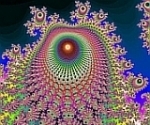KLM has it exactly right.KLM wrote:I agree there are a few individuals who may find the algorithms used by one manufacturer are better suited to their breathing patterns than another. But I also want to emphasize the majority will receive effective treatment from any apap. Apap event detection and the reporting software is not the gospel. But it's the best method currently available. We know clinically defined hypopneas cannot be detected without an oximeter and clinically defined centrals cannot be detected without a respiratory effort belt, but we also know the algorithms currently used employ highly complex techniques for discerning these events to the best of their programmed ability.
The stated, designed function of an APAP machine to reduce apnea and hypopnea (by which I mean according to their clinical definitions) and the current machines do that very well for most people. Then again a CPAP machine can do that quite well for most people but APAP has other advantages. The fact that you can download an event log from the APAP is a good feature but must not be reified into a belief that those downloaded numbers add up to a little sleep study every night. Far from it, the definitions of apnea and hypopnea require information not available to the APAP machine at all. If you consider the data downloaded from an APAP machine to be a sleep study, then it's a sleep study with very poor validity and with unknown sensitivity and specificity.
So the fact of the matter is that with or without downloaded data from the APAP machine, you don't truly know how well your OSA has been treated. Fortunately, you don't need an absolute standard of evaluation every night of your life. What is true of the numbers you can download is that almost always lower numbers correspond to better treatment (unless there's something very unusual about your sleep disorder). So if APAP under a certain setting and conditions gives you a "9" on its scale and under a different setting and conditions gives you a "2" then you're pretty sure that the latter is the way to go, notwithstanding the fact that your downloaded "2" may or may not correspond to any number "2" that a sleep study would show.
APAP is a treatment device. Just like CPAP its purpose is to splint your airway open while you sleep. To the extent that an APAP can be used as a "diagnostic" tool, it is valid only for diagnosing the effective pressure or range of pressures that you require. The commonly-used APAP machines have not been validated for diagnosing the presence of severity of obstructive sleep apnea.











